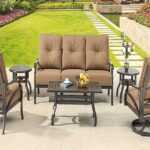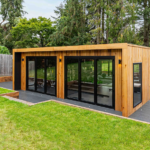The heating and cooling processes of your home often take up most of your energy bill. Some estimates suggest that up to 55% of your home’s electricity bill could just revolve around your air conditioning and heating. That means if you’re able to make your heating and cooling more effective, you’ll be able to reduce the amount of electricity you use and buy. Here’s what you need to know about energy savings through better heating and cooling.
 Guide to Efficient Heating and Cooling Created By: Foundation Recovery Systems
Where Does Your Home Lose Most of Its Energy?
Guide to Efficient Heating and Cooling Created By: Foundation Recovery Systems
Where Does Your Home Lose Most of Its Energy?
There are certain places in your home where it’s more common to lose a substantial amount of energy if you’ve never invested into energy efficient options in the home as a whole. These areas of “energy vulnerabilities” can be an important part of tackling what problems you might be experiencing.
- Duct Register
- Plumbing Vent Stack
- Top Plate
- Vent Fan
- Sill Plate
- Dryer Vent
- Crawl Space
- Doors
- Windows
Some of these are pretty obvious; because windows allow you to open and close them, there are bound to be some places where things don’t seal quite right, especially as the home gets older. However, you probably don’t know about many of these areas. That’s why it’s important to talk to a home repair expert to learn more about energy efficiency.
How to Improve Home Energy Efficiency
What can you do to make your home more energy efficient? It’s important to recognize that there are a variety of methods of improving the energy efficiency of a home, and some of them may be more effective than others. If you want to make sure you’re getting the most out of your home’s energy efficiency, you might want to consider these options.
- 5-30%: Sealing Air Leaks Using Caulking, Spray Foam, and Weather Stripping
- 10%: Using a Programmable Thermostat to Reduce Energy Usage While Sleeping
- 12-33%: Installing Storm Windows
- 15%: Switching to an EnergyStar Gas Furnace
- 20%: Crawl Space Insulation and Encapsulation
Of course, the reason that many of these have such a wide range of percentages is because their efficacy may vary based on your home’s unique problems. You can’t improve your home energy efficiency without getting a personalized quote from a home repair expert; there’s no such thing as a one-size-fits-all efficiency move.
The Many Benefits of Switching to Efficient Energy Options
There are a number of benefits that you might receive when you switch to something that’s energy-efficient instead of something that you’re currently using. Even just reducing your amount of electricity is often enough for people, but if you’re looking for even more, here are a few additional benefits you may not have considered.
- Low-Cost Overall: Updates Often Pay for Themselves Through Lower Energy Bills on Average
- Lower Cost in the Future: You May Be Able to Claim a Tax Credit for a Certain Percentage of Your Home Insulation
- Environmentally Friendly: Using Less Energy Is Good for the Environment
- More Comfortable Living Spaces: Even If You’re Using Less Energy, You’ll Have More Comfortable Areas of the Home
With these four things combined, it makes sense that so many people are switching to energy-efficient options. It’s better for the environment, it’s often more comfortable even when you’re not actively using it, and it can save you a lot of money in the long run.
Conclusion
As you can see, heating and cooling definitely isn’t easy, but one way you can maximize your home’s energy efficiency is by getting an expert to come by and take a look. The best way to make the heating and cooling process even easier and less expensive is to have a home repair expert inspect the home and let you know what you can do to maximize your energy efficiency.






Leave a Reply
You must be logged in to post a comment.